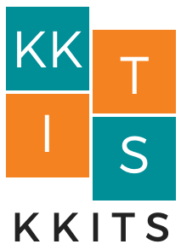The upside of that path is that you have excellent background knowledge about the industry that can inform decisions about materials, techniques, or sales. On the other hand, very few people are natural-born leaders, and working as an individual painter doesn’t always offer the opportunity to develop leadership skills. Moving from working as a painter to starting your own business may seem like a daunting process, but it doesn’t have to be. Establishing a business legally is a straightforward process, and creating a plan for growth is exciting. As you get deeper into the process, you’ll get to tackle challenges with cash flow, marketing, hiring, and more.
Tips for Enhancing Customer Engagement Through Customization
- To grow your painting business sustainably, it’s not enough to be a Master Painter, you need to be a master of your cash flow.
- Also, mention any regulations or legal requirements related to your business, including health and safety standards.
- Each approach focuses on optimizing resources, increasing customer satisfaction, and expanding market reach.
- Each benefit helps make running a successful painting company smoother and allows you to keep an eye on profitability without getting bogged down in numbers.
- But your costs keep adding up, and you need cash on hand to continue hiring skilled painters, buying paint and equipment, and taking on more or bigger painting jobs.
- For instance, using technology to manage inventory can help prevent over-purchasing or stockouts, leading to cost savings of up to 20% annually.
- This helps avoid common problems like doing tasks at the same time or fixing errors, which waste time and money.
Overall, this section of your painting business plan should focus on customer acquisition and retention. Try to, include a sensitivity analysis for different scenarios, and clearly explain how much funding you need and how you plan to allocate it. This detailed analysis will help guide your financial decisions and give potential investors confidence in the financial viability of your painting business.
Financial Highlights
Hiring, training, and developing an Law Firm Accounts Receivable Management excellent team is the best investment you can make in growing your painting business. First, realize that your revenue is taxable, and it’s important to report all of it, either from residential or commercial clients. Job costing lets painting contractors see where the money goes for each job. This will help you with financial planning and making smart choices based on data.
Industry size & growth
- We’ve helped businesses across the country grow and scale, and in this post, we’ll explore five of the most common challenges and offer actionable solutions to help you stay ahead of the game.
- You’ll need to do thorough market research to gather insights into the overall market and industry factors that may impact your business.
- If you have an accountant, work with them to create a real-time view of your cash flow that you can check at any time.
- Furthermore, project management systems can facilitate better communication with real estate professionals, leading to fruitful partnerships that enhance market potential.
- This correlation indicates that ongoing professional development is not just an expense, but an essential investment for growth.
By understanding the industry landscape, crafting a detailed painting business plan, and executing a solid marketing and operations strategy, you can set yourself up for success. Whether you’re starting a small painting business or a larger enterprise, having a clear plan will help you navigate challenges and seize opportunities in this vibrant industry. With the right approach, owning a painting business can be payroll highly rewarding and profitable.
Bookkeeping For Painters: Things You Need to Know
Just like paint has catalysts to improve its finish, you want to hire catalysts that improve the quality of your company’s offerings. The first step in growing your painting business is to create a growth plan. Start with your business plan – if you didn’t have a business plan when you started your painter’s business, now would be a good time to write it down. Below, we’ve listed some items your business plan should definitely include. Both had disappointing experiences with their prior employers, as the companies charged high fees and were not committed bookkeeping for painters to providing excellent client-oriented services.
